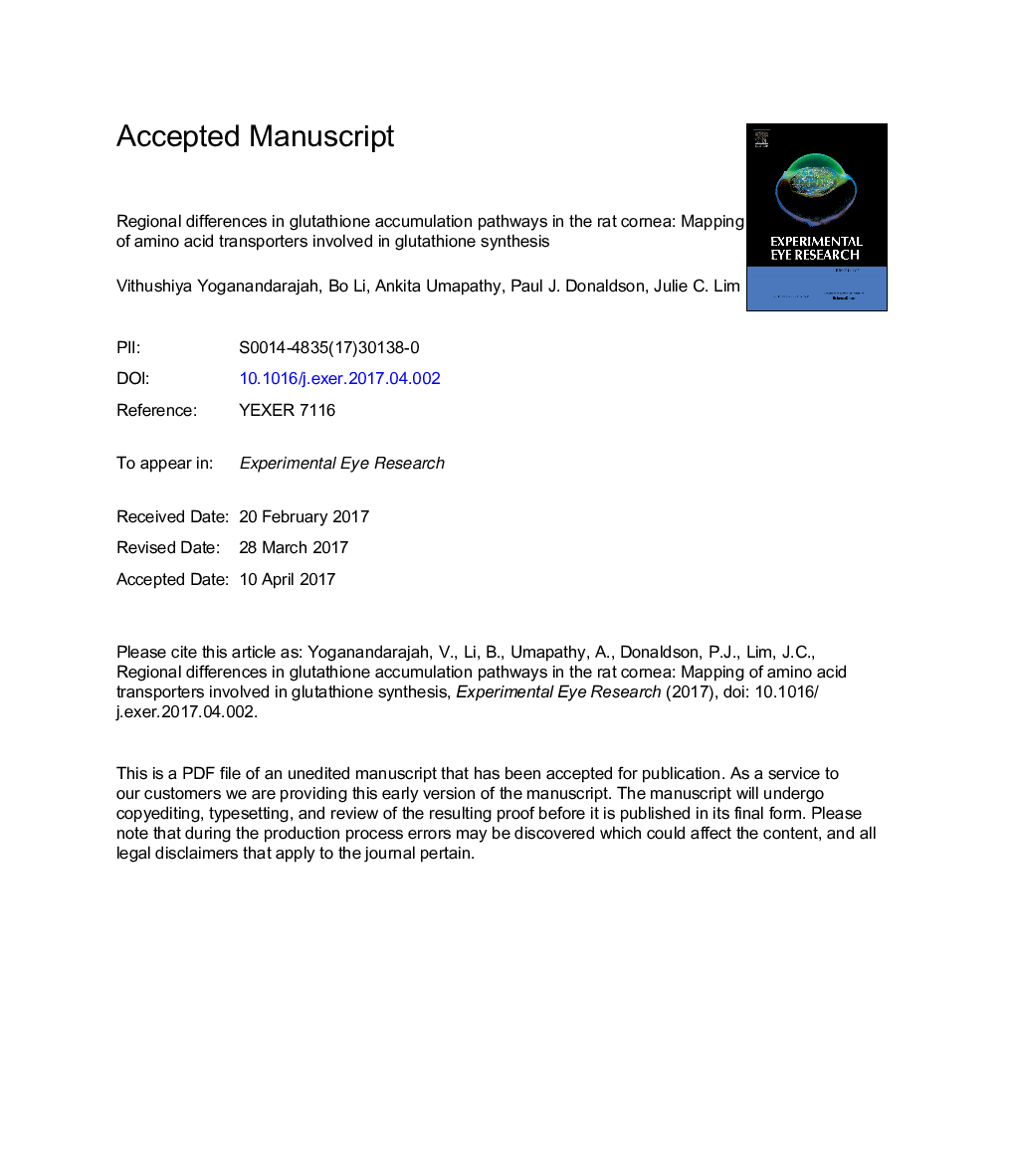| Article ID | Journal | Published Year | Pages | File Type |
|---|---|---|---|---|
| 5704017 | Experimental Eye Research | 2017 | 42 Pages |
Abstract
In this study we have sought to complete the identification and localisation of uptake pathways involved in accumulating precursor amino acids involved in GSH synthesis in the rat cornea. To do this, we performed reverse transcription PCR (RT-PCR) to identify the Excitatory Amino Acid Transporters (EAAT 1-5) responsible for glutamate uptake, and glycine transporters (GLYT 1-2) at the transcript level. Western blotting was used to verify protein expression, while immunolabelling of sagittal sections was used to localise transporters to the different layers of the cornea. Immunolabelling of en face sections was used to examine the subcellular distribution of proteins in the corneal endothelium. Our findings revealed EAAT 1-5 and GLYT 1-2 to be expressed at the transcript and protein level in the rat cornea. Immunohistochemistry revealed all amino acid transporters to be localised to the epithelium. In the majority of cases, labelling was restricted to the epithelium, and labelling absent from the stroma or endothelium. However, EAAT 4 and GLYT 2 labelling was detected in the stroma with EAAT 4 labelling also present in the endothelium. Overall, the identification of amino acid transporters strongly supports the existence of an intracellular GSH synthesis pathway in the rat corneal epithelium. This suggests that regional differences in GSH accumulation pathways exist, with direct uptake of GSH and intracellular synthesis of GSH restricted to the endothelial and epithelial cell layers, respectively. This information is important in the design of targeted strategies to enhance GSH levels in specific layers of the cornea to prevent against oxidative damage, corneal swelling and loss of corneal transparency.
Related Topics
Life Sciences
Immunology and Microbiology
Immunology and Microbiology (General)
Authors
Vithushiya Yoganandarajah, Bo Li, Ankita Umapathy, Paul J. Donaldson, Julie C. Lim,
